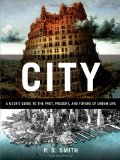Summary | Excerpt | Reviews | Beyond the Book | Readalikes | Genres & Themes | Author Bio

 Book Reviewed by:
Book Reviewed by:
Elizabeth Whitmore Funk
Buy This Book
1. ARRIVAL
The City in the Lake
On 8 November 1519, Europeans caught their first glimpse of
Tenochtitlán, the Aztec capital and the centre of the greatest empire
ever seen in Mesoamerica. 'We came to a broad causeway,' recalled a
twenty-three-year-old Spanish soldier, Bernal Díaz del Castillo, 'and
when we saw all those cities and villages built in the water, and other
great towns on dry land, and that straight and level causeway leading
to [Tenochtitlán], we were astounded.' It was an extraordinary
moment for the Spaniards and for the Aztecs, a moment when two
great civilisations that had grown up in complete ignorance of each
other suddenly collided. The sight of men mounted on war horses
was deeply unsettling for the Aztecs, who had never even seen a donkey
let alone such powerful beasts of burden. For Díaz and his five
hundred or so comrades, led by Hernán Cortés, it was a moment of
real fear as they approached the huge metropolis. But there was also
wonder and awe at the sight of this strange yet beautiful city in the
lake.
Tenochtitlán was built in a valley, high up in the mountains, on
the site of today's sprawling Mexico City. Sheer volcanic peaks rose
around it like jagged teeth. Water cascaded down from the mountains
into a series of five lakes which were spread out along the valley.
On their banks were countless small towns and villages built
beside the clear water. The largest of these was the magnificent city
of Tenochtitlán, the Venice of the New World. It stood on an island
in the corner of the biggest lake, Lake Texcoco. Causeways, each 'as
wide as two cavalry lances', according to Cortés, led into the city from
north, south and west, stretching up to eight kilometres across the
lake from the shore to the city. A cloud of jostling dugout canoes
laden with goods swarmed around it like bees round a hive. For Díaz,
the sight of Tenochtitlán rising out of the glittering waters of the lake
was 'like an enchanted vision' from some magical tale. 'Indeed,' he
added, 'some of our soldiers asked whether it was not all a dream.'
Even forty years later, as he began to write his memoirs in what is
today Guatemala, words still failed him: 'It was all so wonderful that
I do not know how to describe this first glimpse of things never heard
of, seen or dreamed of before.'
Cortés and his men were the first Europeans to enter Tenochtitlán.
Their motivation was both sacred and profane: their ships had left
Cuba nine months before to claim these unexplored lands for the
Spanish crown and for the Roman Catholic Church. But they were
also driven by greed, by the desire to find the mythic city of gold,
El Dorado. As they marched across the causeway to the city of
Tenochtitlán, as magnificent as any in Europe, Díaz and his comrades
must have thought they had found the city of their dreams. They saw
houses draped with exotic flowers and above them the towers of magnificent palaces and temples to strange gods. 'With such wonderful
sights to gaze on,' Díaz wrote, 'we did not know what to say, or if this
was real that we saw before our eyes.' The Aztecs rushed to see these
emissaries from another world. 'Who could now count the multitude
of men, women, and boys in the streets, on the rooftops and in canoes
on the waterways, who had come to see us?' recalled Díaz.
The Aztec ruler, known to us as Montezuma (his name was in
fact Motecuhzoma), greeted them at the end of the causeway. Around
him were his lords and chieftains arrayed in brilliantly coloured
cloaks. Montezuma was, said Díaz, about forty years old, with a
short black beard, a cheerful face and 'fine eyes'. He was standing
beneath a rich canopy of green feathers, decorated with gold work,
silver, pearls and semi-precious stones hanging from a border. As
Montezuma stepped forward, his lords threw down their cloaks so
that his feet would not touch the ground. As they did so, none dared
look at his face. Montezuma greeted Cortés with fragrant garlands of
flowers. In return, Cortés offered a necklace of glass beads. Then the
conquistadors marched on into the city of Tenochtitlán.
Excerpted from City by Peter D Smith. Copyright © 2012 by Peter D Smith. Excerpted by permission of Bloomsbury. All rights reserved. No part of this excerpt may be reproduced or reprinted without permission in writing from the publisher.





The Funeral Cryer by Wenyan Lu
Debut novelist Wenyan Lu brings us this witty yet profound story about one woman's midlife reawakening in contemporary rural China.
Your guide toexceptional books
BookBrowse seeks out and recommends the best in contemporary fiction and nonfiction—books that not only engage and entertain but also deepen our understanding of ourselves and the world around us.